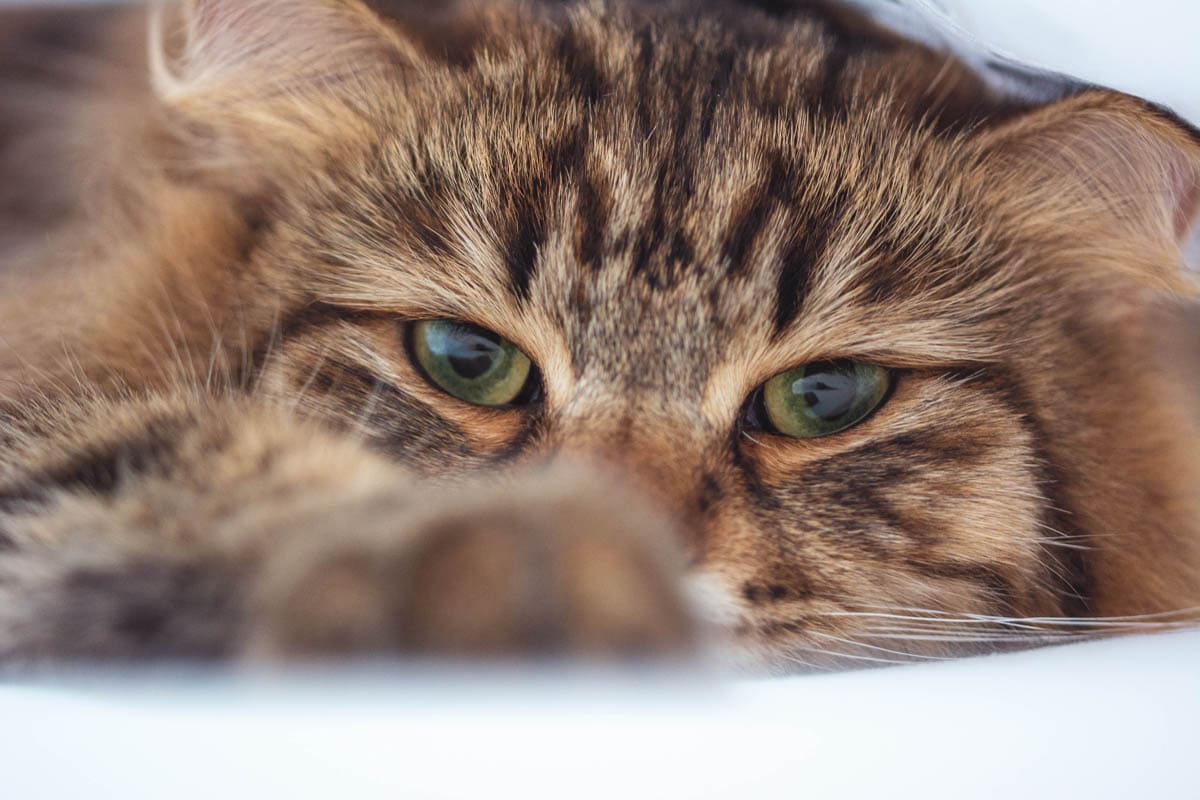What is pleural effusion?
Pleural effusion is an abnormal buildup of fluid up in the pleural cavity, the thin fluid-filled space that lies between the lungs and the chest wall.
Two membranes line the thorax and lungs, and the space between naturally has a small amount of fluid, which helps to lubricate the lungs as he breathes in and out. Small blood vessels in the pleural lining produce this fluid, blood and lymph nodes take away excess fluid to keep it all in balance.
Pleural effusion is a symptom, with an underlying disorder causing this fluid to build up. The buildup of excess fluid leads to difficulty breathing due to the inability of the lungs to fully expand.
Most fluids can be classified as transudates or exudates. Transudate (protein poor/clear watery fluid) effusion or exudate (protein-rich/thick fluid) effusion. The type of fluid can help your veterinarian determine the underlying cause.
Cats of any age or sex can be affected by pleural effusion and it can occur on just one side (unilateral) or both (bilateral).
Causes

There are a lot of causes of pleural effusion in cats, transudate or exudate. How the fluid came to be in the pleural space is tied in with this.
Transudate (hydrothorax)
Caused by either an increase in intravascular hydrostatic pressure or a decrease in intravascular oncotic pressure in the vessels of the pleural membranes, causing fluid to leak out of them. The protein particles are too large to cross the vessel, resulting in only the fluid exiting (hence low protein).
Common causes include:
- Congestive heart failure
- Liver failure
- Hypoalbuminemia can result in decreased oncotic pressure; this is usually due to nephrotic syndrome
- Fluid overload (in cats most commonly during fluid therapy)
- Lung lobe torsion
- Pulmonary embolism
- Diaphragmatic hernia
Exudate effusion is generally due to inflammation or increased vascular permeability and can be one of several types, including:
Nonseptic
- Cancer (most commonly lymphoma)
- Fungal infection
- Viral infection such as feline infectious peritonitis (wet form)
- Lung lobe torsion
- Pulmonary embolism
- Diaphragmatic hernia
- Pancreatitis
- Drug reaction
Septic
Chyle (chylothorax)
Chyle is a milky white fatty fluid that flows within the lymphatic vessels.
- Neoplasia
- Pulmonary hypertension
- Heart disease
- Heartworm disease
- Lung lobe torsion
- Obstruction of the thoracic duct
- Tear or leak in the thoracic duct
Blood (hemothorax)
- Trauma
- Torn blood vessel
- Coagulopathy (most commonly due to ingestion of rat poison)
This list is by no means complete; there are many other possible causes of pleural effusion in cats.
Symptoms
As the excess fluid accumulates in the pleural cavity, the lungs become compressed, making it much harder for your cat to breathe.
- Increased respiration rate
- Open-mouthed breathing
- Coughing
- Lethargy
- Blue-tinged gums, lips, and tongue due to cyanosis
- Loss of appetite
- Unusual sitting position, hunched over, unable to lie down or stay comfortable
Diagnosis
The veterinarian will perform a complete physical examination, which will include listening to the lungs with a stethoscope. Diagnostics will be necessary to confirm the cat has pleural effusion and determine a cause.
Diagnostic workup:
- Focused Assessment Sonography for Trauma (FAST procedure): A chest ultrasound to look for the presence of fluid within the pleural cavity. This non-invasive and quick test can help the veterinarian evaluate the cat quickly.
- Xrays: Not all veterinary practices have an ultrasound machine to perform a quick assessment, in which case an x-ray can help the veterinarian evaluate the chest, heart and lungs for structural abnormalities, blockages and tumours.
- Thoracentesis: If the FAST ultrasound does reveal pleural effusion, thoracentesis can be carried out. This procedure removes excess fluid from the pleural space using a needle which not only relieves pressure on your cat’s lungs but also provides your veterinarian with pleural fluid samples.
Once the cat has been stabilised, and his breathing managed, further tests may need to be carried out to determine what caused the pleural effusion.
- Baseline tests: Biochemical profile, complete blood count, and urinalysis to check organ function, protein in the urine, red blood cell count (anemia) and look for signs of possible infection.
- Advanced imaging: Computed tomography (CT) scan to look for penetrating injury, lung lobe torsion or foreign object.
- Abdominal ultrasound: To look for a possible cause of pleural effusion such as pancreatitis or abdominal neoplasia.
- Pleural fluid analysis: A small amount of fluid is extracted with a fine needle, which helps the clinician determine the cause of the pleural effusion. Different tests will be ordered depending on the type of fluid removed. Tests may include cell count, packed cell volume, culture and sensitivity, glucose, fluid pH, and cytology.
- Antigen tests: Blood tests to look for the presence of feline immunodeficiency virus or feline leukemia virus antigen.
- Echocardiogram: A non-invasive test that uses high-frequency sound waves to capture live images of the heart to examine the anatomy and function of the heart and valves.
- Electrocardiogram (EKG): A recording of the electrical activity of the heart.
Treatment
The goal of treatment is to stabilise the cat and then address the underlying cause. Before treatment commences, it will be necessary to stabilise the cat.
Oxygen therapy: To deliver a controlled level of oxygen to help the cat breathe and increase oxygen levels in the blood. Oxygen is delivered via a face mask, or in some cases an oxygen tent.
Thoracentesis: Fluid is removed by thoracentesis, which allows the lungs to expand. A needle or drainage tube will be inserted through the skin and into the pleural cavity to remove the fluid. A chest drain may remain in place for several days to help drain away excess fluid.
Once the cat is stable, the veterinarian will begin treatment for the underlying cause.
Prognosis
Prognosis depends on the underlying cause of pleural effusion but is poor, especially in cats with cancer.

